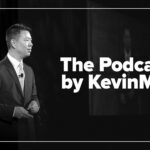Dreaming of medicine
Everyone has an origin story. Mine doesn’t include any radioactive spiders or vats of glowing fluid, but I did get a few extra volts of electricity being defibrillated back to life at seventeen, and that’s close enough to a tragic backstory for me. It was a short-lived event, but long enough to change everything. I remember the blur of motion as a team of doctors worked around me. It was a surreal experience to wake up and realize I was still here. Still alive. That moment didn’t just bring me back. It pointed me forward. That experience was the clarion call that set me firmly on the path to medicine. It wasn’t going to be easy. There were plenty of obstacles between a wide-eyed survivor in a hospital gown and a medical student with a stethoscope.
My parents immigrated from Iran, trading their familiar world for a shot at a better life in the U.S. They each found their own way to serve others: my mom became a nurse, and my dad became a police officer. They met in an emergency room, which is probably the most romantic thing that’s ever happened under fluorescent lighting. Our dinner conversations sometimes felt like a crossover episode between ER and Brooklyn Nine-Nine, with Mom sharing stories of her patients and Dad recounting his traumatic patrol adventures. In our family, service was everything. I was named after a child my mother cared for in pediatric oncology. Sometimes I wonder if that’s where it started, the seed of something that would take years to bloom. Watching them, I learned that you don’t need a cape to help people. You just need dedication and grit. I didn’t fully realize it at the time, but their example quietly planted a seed. I was on track to do something no one in my family had done before: go to medical school.
Inspired by my parents’ example of service, I started small in my own way. In high school, I spent my free time volunteering at my church, doing anything that needed to be done. Often, that meant driving people struggling with sobriety to AA or NA meetings and staying to attend them. I attended about a hundred meetings and got to witness real, gritty resilience up close. There’s something quietly heroic about a person choosing sobriety day after day and being a tiny part of that journey taught me how powerful it is to be present for someone else. This led me to volunteering at rehab centers. I didn’t have a formal title or training. I just listened. Soon, I found myself counseling people in rehab.
At the time, I was a full-time artist. Art was my escape and my way of making sense of the world, but I hadn’t yet figured out how it would fit into my future. Medicine wasn’t even a passing thought. My world was paint, ink, canvas, messy, beautiful, creative chaos. After my near-death experience, something shifted. The impulse to help, to be present in the darkest, messiest moments of a person’s life, that’s where I felt most alive. Medicine was never a “career goal.” It was a calling.
So, I went to college. I majored in biochemistry because I genuinely wanted to understand how things worked on a microscopic level, and I loved chemistry. I loved diving deep into the why behind the body. For fun, I signed up for a microbiology class, and I fell completely in love with it. The tiny invisible world made perfect sense to me, like discovering a new language I somehow already understood. I bought a USB microscope and started projecting my images onto walls and turning them into art. Amoebas became brush strokes. Bacteria became patterns. Petri dishes turned into palettes. I found a weird, wonderful intersection where science met creativity that felt like home. That was the first time I realized I didn’t have to choose between being an artist and being a future doctor. I could be both.
Med school
Then came medical school.
So naturally, I moved to Barbados, because nothing says “serious academic pursuit” like relentless humidity, wild monkeys, giant bugs, and sheer panic on a stunningly beautiful island. The beaches were surreal, the skies were cinematic, and the people were incredibly kind. Almost two years in, the pandemic yanked me back home. There wasn’t a dramatic movie montage after that. Just a lot of studying. And exams. And occasional existential crises.
I had always been an excellent student, type-A, overachieving, color-coded-notes type. But med school was not impressed. If pre-med was swimming laps, med school was being shoved off a boat in the dark, blindfolded, while someone yelled, “Just float! You’re smart!” and a textbook drifted by like a life preserver. It was a humbling slap in the face, but also kind of freeing. I didn’t adjust perfectly or quickly, but I adjusted.
I realized the only way I was going to survive this was by making it fun. So I turned to what I knew: creativity. I drew everything. If it needed to be memorized, it got illustrated. The more I drew, the more the information stuck, and my grades climbed. I discovered I was a hardcore visual learner. Soon, I went full immersion. I threw on my VR headset, jumped into Gravity Sketch, modeled anatomical structures in Blender, and literally created the things I needed to learn.
It worked. Not just for me, but for others. Friends started asking to study with me. Suddenly, I wasn’t just passing. I was helping others understand some of the hardest concepts in medicine. Learning became something I looked forward to.
Then came clinicals. Finally, a chance to test all that knowledge on real patients. And to my surprise, I was good at it. I was efficient. Focused. Empathetic. People trusted me because I genuinely cared. I gravitated toward patients who didn’t have anyone in their corner. I wanted to help them feel seen and be the person who stayed when others didn’t.
Meanwhile, I kept using every offbeat skill I had. I was a licensed tattoo artist, so I offered realistic areola tattoos for post-mastectomy patients. It felt like sacred work, restoring something small that meant something huge. During my plastics rotation, I became obsessed with every stitch and knot, trying to perfect the art of closure. Then I started teaching other students what I’d learned. We all needed each other to survive.
I also met people like me. Students with no financial support, who worked during school, who had to hustle every single day just to stay afloat. I was living in Southside Chicago in a half-demolished building (no, really, I had to sign paperwork saying I was OK with it falling apart around me). But it was cheap and near the hospitals, so I stayed. I felt like I was earning this. Scrappily. Creatively. Completely on my own terms.
The roadblock and the growth that follows
Then came the part no one brags about on Instagram. I didn’t match into diagnostic radiology, but I did match into a transitional year, which I was extremely grateful for. Was it painful? Yes. I’d poured my heart into a specialty that felt like home, and it didn’t pan out the way I’d hoped. Did I consider hiding in a pillow fort for a while? Also yes. But I also realized that resilience isn’t about denying the pain. It’s about folding it into the narrative.
I was always someone who could see failure and still move forward. Who could meet disappointment with curiosity instead of collapse. Who didn’t just want to be a doctor but wanted to be a good one.
I leaned all the way into the creative side of radiology, the part that had drawn me in from the beginning. I began exploring how to make the pursuit fun, collaborative, and creative. I partnered with a virtual reality company focused on medical education. I used my art background to create engaging visuals and study tools. I dove into research in topics that genuinely lit me up. And I think that’s where I started to shine. Not just as a future radiologist, but as someone building their own road toward it.
I also started a collaborative initiative focused on radiology, AI, and deep learning, connecting early-stage students with established physicians and researchers who wanted to mentor, share opportunities, and give back. What began as a personal mission and passion project was quickly turning into a growing community built on support, shared curiosity, and mutual encouragement.
I volunteered in online radiology education groups. I began research teams. I created and shared resources, celebrated others’ wins, and reached out to students who reminded me of myself—passionate, overwhelmed, and unsure if they belonged. Together, we made space for each other, and space for growth.
I’m now applying for diagnostic radiology for the second time, a field where my analytical mind and artistic brain finally get to work together. Where grayscale images become a fluent language I love decoding. Where precision meets perception.
I used to think medicine was about proving something. But it’s not about being impressive. It’s about being present. About showing up, especially when things don’t go as planned. Because they never go as planned. All we can do is stay human, help where we can, and make this wild, messy road count.
If superhero movies have taught us anything, it’s that the origin story is just the beginning. I’m not saying I’m a hero. (That would be weird.) But I do get to help people alongside some truly incredible humans who’ve taken their own winding roads here. And to me, that’s more than enough.
Amy Avakian is a physician.


















![How genetic testing redefines motherhood [PODCAST]](https://kevinmd.com/wp-content/uploads/Design-3-190x100.jpg)
![A leader's journey through profound grief and loss [PODCAST]](https://kevinmd.com/wp-content/uploads/The-Podcast-by-KevinMD-WideScreen-3000-px-4-190x100.jpg)



